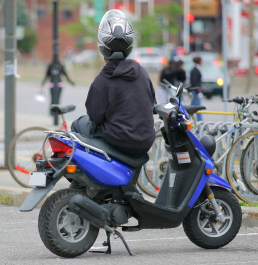 SHARP, the Safety Helmet Assessment and Rating Programme, which helps riders to make an informed choice about helmets, reports that the TRL, the UK’s Transport Research Laboratory are investigating helmet fit.
SHARP, the Safety Helmet Assessment and Rating Programme, which helps riders to make an informed choice about helmets, reports that the TRL, the UK’s Transport Research Laboratory are investigating helmet fit.
TRL’s spokesman said that it is, “Conducting research to examine the factors associated with helmet loss, which will assist our understanding of the potential mechanisms and provide better consumer education to motorcycle helmet users. The programme involves physical testing and helmet user surveys.”
Part of this research is an invitation to motorcyclists to take part in their online survey, which “Will provide us with valuable data on rider attitudes to motorcycle helmet fit and potential factors that may influence the quality of this fit.”
TRL reports that in “Powered Two Wheeler” road fatalities “Over 80% receive a strike to the head and in 80% of these cases the head injury is the most severe injury sustained.” TRL also comments “There is strong evidence to show that between 10-14% of helmets are ejected prior to or during the impact event.”
TRL states that, “Current European regulation, 22.05, includes a pull-off test to try to ensure adequate retention-system strength and stability. Schemes, such as SHARP, educate the user to improve fit selection at time of purchase. But, it is unclear whether either adequately addresses the true mechanisms of helmet loss. TRL’s study aims to investigate whether the existing test requirements in ECE Reg. 22.05 are realistically based and how well existing helmet designs comply to these tests when new and used.”
TRL also hopes to ”identify the mechanisms of helmet loss and to quantify the importance of relevant factors such as inertia effects, head geometry and flesh compliance and misuse. Collection of real world data to support this project will be a valuable asset which can be used to support future projects and educate both the industry and end users.”
In Right To Ride’s “Northern Ireland Motorcycle Fatality Report 2012″ which was an in depth study of 39 cases relating to motorcycle fatalities in Northern Ireland (UK) between 2004 and 2010 information was published regarding helmets and helmet loss.
Of the twenty eight cases where information about helmets is recorded, twenty six were full face and one was a flip face. In six cases, the helmet was recorded as not being secured. The type of closure was recorded for eight of the helmets: six had a “Double D” closure and two had a “locking tongue” closure. In two cases the visor was tinted, sixteen of the visors were clear and there was no information about visors for the remaining nine helmets.
In six cases, the helmet was recorded as not being secured.
As TRL are investigating in part the mechanisms of helmet loss, one would assume that non secured helmets will be factored into their research and eventual conclusions.
We all know that for riders and pillions on a motorcycle, scooter or moped it is mandatory to wear a helmet and those helmets MUST comply with regulations and they MUST be fastened securely.
So while you are required to wear a helmet, the least that can be done is to make sure it is fastened correctly. The dynamics involved in a collision, even a “low speed” could see the helmet ejected from your head.
Original Source from TRL – Click Here
Information
TRL Survey – Click Here
SHARP – sharp.direct.gov.uk
“Northern Ireland Motorcycle Fatality Report 2012″ – pdf 1.1mb – Click Here
Motorcycle Helmet Law – Forty years ago, the “Motor Cycles (Wearing of Helmets) Regulations 1973 (S.I., 1973, No. 180), dated 7th February 1973”, was enacted – the statutory instrument came into operation on 1st June of the same year – Click Here
Find out how much more your helmet can help you at Biker NI Safety Card – www.bikernisafetycard.org



Speak Your Mind